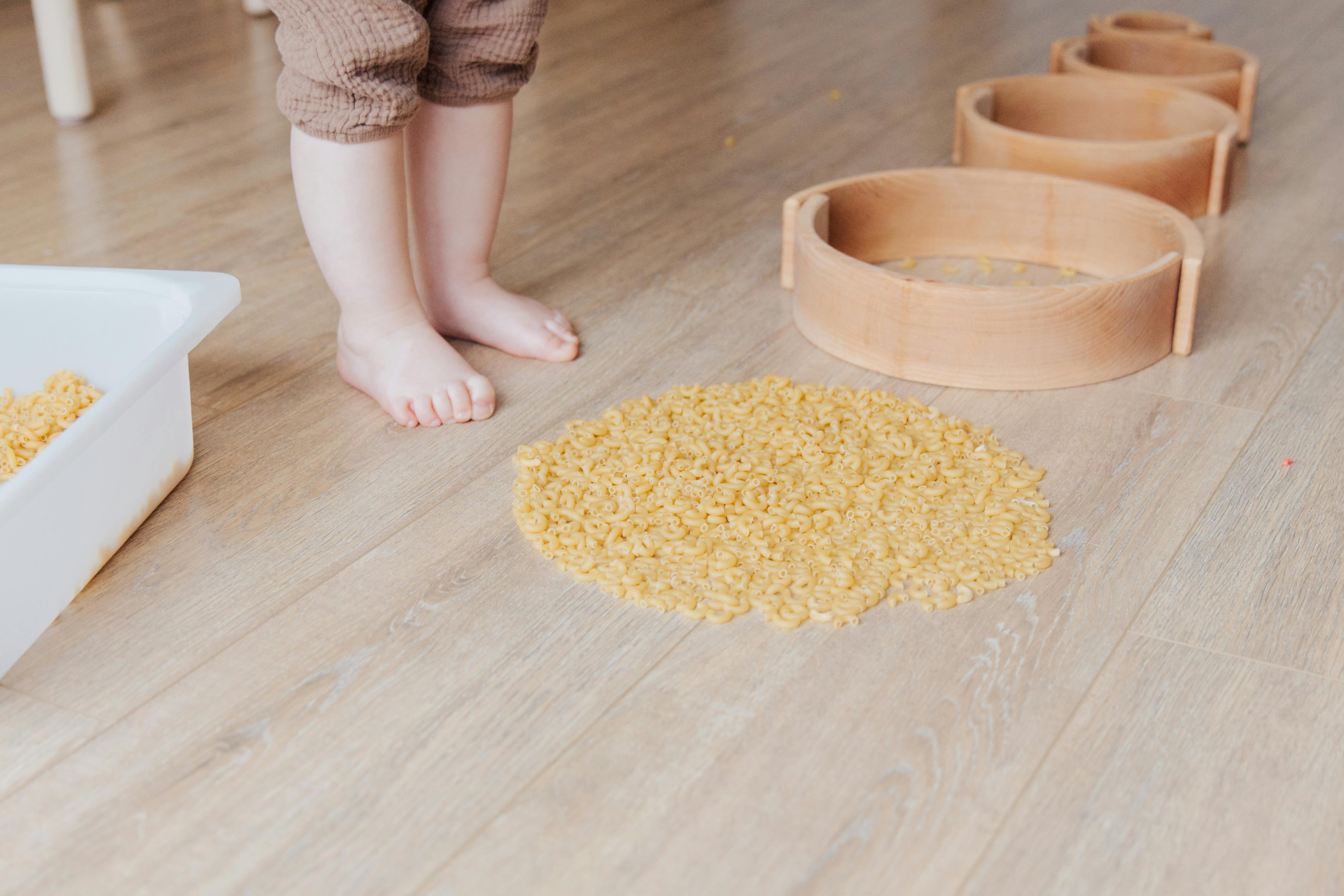🌈 Squish the Rainbow
🎯 Target Skills
- Sensory exploration
- Color recognition
- Hand strength
- Focus and curiosity
🧰 Materials
- Resealable ziplock bags
- Washable paint in different colors
- Clear tape
- Household alternatives: ketchup/mustard, yogurt with food coloring, hair gel, jelly
👣 Step-by-Step
- Squeeze a small amount of different paint colors into a ziplock bag 🖌️
- Seal the bag well and tape all sides to a table or floor securely
- Place baby in front and encourage touching, pressing, and squishing the colors 🤲
- Name the colors aloud as they touch them 🎨
- Gently guide their hands to mix and press to see color blending
- Make funny sounds or faces for each color touched to boost fun 😄
- Let them explore for 5–10 mins or as long as they’re interested
🤗 Parent/Caregiver Guidance
Get excited and make big reactions! Say things like, “Ooooh, you squished the blue!” or “Look, red and yellow made orange!” Use silly sounds to match the colors. If baby seems hesitant, start with your own finger first to model it. Just follow their lead 💛
🧠 Why This Helps
Squishing paint builds early hand strength and introduces cause and effect (e.g., "I press, it moves!"). Bright colors keep their attention and begin teaching color names through repetition in a no-pressure way.
📚 Research Foundation
- Piaget’s Sensorimotor Stage – babies learn by doing and feeling
- Vygotsky’s Social Interaction Theory – learning through guided interaction
🧺 Color Basket Toss
🎯 Target Skills
- Gross motor coordination
- Early sorting skills
- Listening and turn-taking
🧰 Materials
- 2–3 laundry baskets or bowls
- Colored balls or soft toys
- Household alternatives: socks in different colors, rolled-up scarves, colored plastic cups
👣 Step-by-Step
- Place 2–3 baskets spaced out on the floor
- Label each basket with a color (use paper or colored tape)
- Show your child how to toss or drop each item into its matching basket 🧺
- Say the color clearly: “Blue goes in the blue basket!”
- Let them try independently and cheer every toss 🎉
- Model again if needed and offer help with pointing or guiding their hand
- Repeat as long as they stay engaged and change positions to encourage movement
🤗 Parent/Caregiver Guidance
Keep your tone light and joyful. Clap when they match correctly and giggle when something goes “oops!” Offer gentle corrections like, “That’s red! Let’s find red’s home.” Your excitement is the real magic here!
🧠 Why This Helps
Babies learn to match and sort visually, a key pre-math skill. Moving while playing builds coordination and body control, while naming colors strengthens word associations.
📚 Research Foundation
- Montessori approach to sorting and matching
- Developmental milestones by CDC for 12–24 months
👀 Peek-a-Color
🎯 Target Skills
- Object permanence
- Color naming
- Memory and focus
🧰 Materials
- Small colored objects (e.g., blocks, spoons)
- Cloth or scarf to cover them
- Household alternatives: lids, buttons, pieces of paper, plastic bottle caps
👣 Step-by-Step
- Place 1–2 colored items in front of your child
- Say each color aloud, “This is yellow! This is blue!”
- Cover them with a scarf slowly 👀
- Say, “Where did the red one go?” and uncover it with a smile
- Let your child try pulling off the scarf
- Repeat with different objects and switch the order
- Eventually hide only one and ask them to name it before revealing
🤗 Parent/Caregiver Guidance
Use your voice to build anticipation—“Ready? Peek… BOO!” Pause for their reaction and always cheer when they find the item. You’re teaching memory, not just color, so let them guess!
🧠 Why This Helps
Peek-a-boo style games build memory, attention, and the concept that things still exist when we don’t see them. Layering in color naming deepens understanding through repetition and surprise.
📚 Research Foundation
- Object Permanence – Piaget’s early cognitive theory
- Interactive play for memory (Zero to Three Foundation)
.svg)
